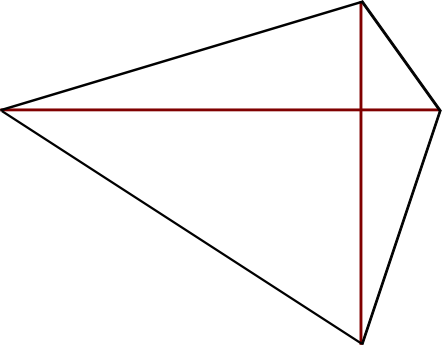A quadrilateral is a ______ if and only if its diagonals are perpendicular?
3 Answers
Orthodiagonal quadrilateral (sometimes known as a perpendicular quad)
Explanation:
My immediate thought was 'kite', but orthodiagonal quadrilaterals cover more cases, e.g.:

Any orthodiagonal quadrilateral can be rotated and translated so that one of its diagonals lies along the
If the orthodiagonal quadrilateral is convex then this can be done with
A bilaterally symmetric convex orthodiagonal quadrilateral is a kite. Any kite can be translated and rotated so that its vertices are
If
If
Rhombus, Square
There is not enough information to decide which single quadrilateral this could be.
Explanation:
It could be an irregular quadrilateral whose diagonals happen to intersect at 90°.
Similarly a trapezium, concave quadrilateral, kite, rhombus or square.
It is not given whether the diagonals are equal, or bisect each other, are line of symmetry of the quadrilateral in questions, nor whether the quad itself has equal or parallel sides.
There are therefore multiple possibilities.



